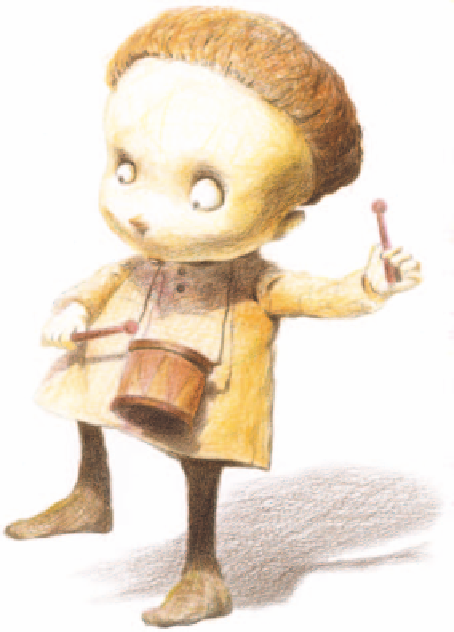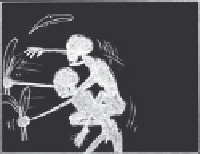Graphics Reference
In-Depth Information
to shrink to be able to l ick the foot through. If it is necessary for a character to have a large foot
for comedy reasons or whatever, you'll i nd that the feet will need to swing at right angles to the
leg to get them through. The alternative is to raise the knee ridiculously high.
Again, many animators are indoctrinated into thinking that a walk cycle is exactly twelve frames
or whatever, and set about dividing a step into twelve equal movements. Well, it doesn't work
like that at all, and that would give such a dull boring walk with no energy, no character or life.
Unless there is a deliberate reason to do otherwise, once the character has started walking, the
torso will travel forward in each frame. If torso has moved back and then forward again, there'll
be a horrible jerk. This constant movement in the required direction has to come naturally, and
has to be felt through the hands as well as through the eyes. Find a mark on the torso and plot
its movement forward each frame. If a character is on a horse, trotting or cantering, then the
torso might move back and forth, but over a series of frames. Tracing a movement in a canter
would reveal a series of elliptical arcs.
Paul Berry's animation for
The Sandman
contains beautifully
clear rhythms in the walking (Saemi
Takahashi).
A lot of drawn animation topics stress the importance of rise and fall in a step, as well as a
sideways swagger from hip to hip. It would take a pretty sophisticated puppet and
a generous schedule to be able to put such detail into a puppet. Swaggers and
bounces only register if they are part of a succession of repeated actions. One hip
bump to the left in a walk doesn't make much sense without seeing it several times,
and because of the spontaneous nature of stop motion this repeated movement is
very hard to replicate each time. This is why I tend to avoid walk cycles as such, and
try to encourage the puppet to be actively doing something as it is walking.



Search WWH ::

Custom Search